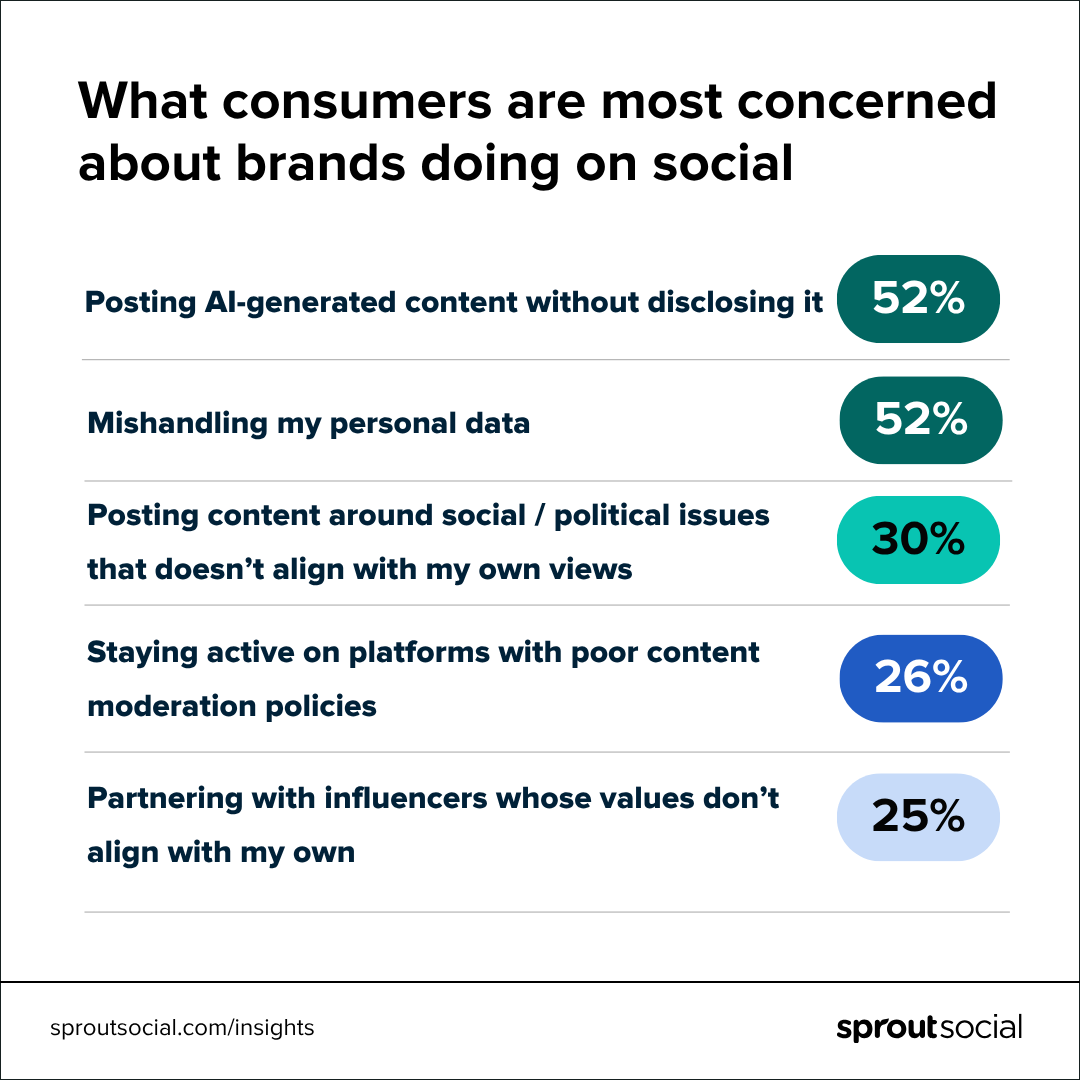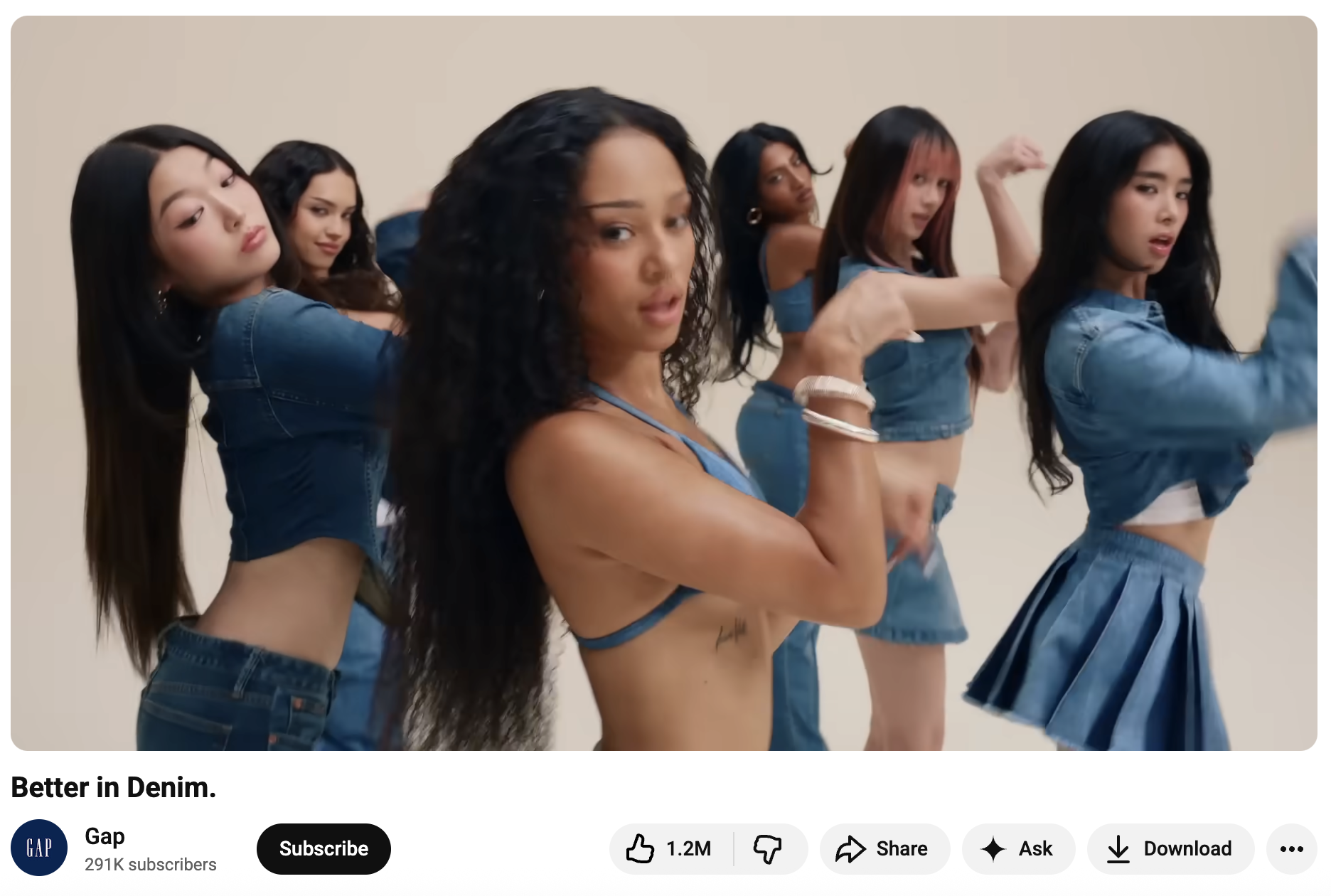Empathy marketing is what sets the best social teams apart

Many marketers too often mistake their job as stewards and amplifiers of their brand. While that isn’t necessarily wrong, it’s not their most important job. Understanding and advocating for their audience is.
We’re back with the latest edition of our series, @Me Next Time, where we invite Team Sprout and some of our favorite social experts to share how they really feel about the latest trends and industry discourse.
This time, we sat down with Patrick Timmons—Senior Manager of Social and Brand Communications, founder of The Brand Kitchen, author, and expert on empathy marketing—to learn more about his empathy-driven philosophy.
As Timmons described, “Traditional marketing says, ‘You see me.’ Empathy marketing says, ‘I see you,’ which is how humans talk to other humans.”
Amid a flurry of AI-generated content permeating our feeds, audiences want person-to-person connection. Per our Q4 2025 Sprout Pulse Survey, consumers say human-generated content, personalized care and surprise-and-delight moments are what they want brands to prioritize most in 2026.
Empathy-driven marketing is at the heart of all of these efforts. Read on for more insights from our interview with Timmons, and steps you can take to build a social marketing strategy rooted in empathy.
What is empathy-driven marketing?
Empathy-driven marketing is a customer-centric approach that focuses on the emotions, needs and challenges people face rather than only objective benefits.
As Timmons put it, “Empathy marketing is understanding why your customers need your product or service. How it makes their lives less stressful or chaotic. It’s identifying the moment in their day when your brand makes them happier or relieved. There’s a tendency in marketing—especially among executives—to focus on the details of how well-designed or efficient a product is. But that’s not why people buy products. They buy products because their value resonates emotionally. Everything we buy starts with emotion.”
Empathy marketing is less about aesthetics and about substance, something Timmons admits takes time for marketers to internalize.
“Early in my career, I thought my job was to make my brand look perfect. But the campaigns that resonated weren’t the glossy ones—they were the ones where people said, ‘That’s so me.’ As Maya Angelou said, ‘People will forget what you said, people will forget what you did, but people will never forget how you made them feel.’ That’s the foundation of empathy marketing—it’s about creating connection, not just communication.”
How empathy and traditional marketing are different
To visualize how traditional and empathy-driven marketing differ, Timmons offered a poignant metaphor. Imagine you’re attending a conference. Traditional marketing is the keynote speaker. Addressing thousands of audience members at once, the keynote speaker proudly lists their accomplishments as they tell their rousing success story. It’s inspiring and memorable, but you don’t have a personal relationship with that speaker. They don’t know you, and you don’t really know them.
On the other hand, empathy-driven marketing is the person sitting next to you in the crowd. This fellow attendee gets to know you and your background, and has firsthand experience doing the same type of work that you do. You share two-way conversations that reveal similar perspectives and goals, and you feel understood by them. Brands that create the same kind of authentic connection with their customers and prospects earn lasting trust and loyalty.
Timmons clarifies that brands should continue to talk about their products and services, but must do so in a way that prioritizes education for the sake of meeting customers’ emotional needs. Don’t use jargon or salesy language. “Let your brand be the thought leader of your audience’s emotions. Show them that you see the challenges they experience. You don’t need to literally say, ‘We make your life easier,’ but you should convey how well you understand their point-of-view. Rather than trying to be the hero archetype, be the therapist.”
Why we need empathy in marketing now more than ever
The current social, political and economic landscape is straining consumers and changing the way they want brands to show up. Take the brand activism renaissance as evidence. Per the Q3 2025 Sprout Pulse Survey, 47% of consumers are more likely to buy from companies that speak out about specific causes or topics in the news, given the current social climate. That rises to 63% for Gen Z.
The Pulse Survey also found that consumers say their top concerns for brands on social revolve around brands publishing AI-generated content without disclosing it, mishandling personal data and posting content that doesn’t align with their own views.

In such polarizing times, audiences want to buy from brands they can trust. Empathy is key to standing out for the right reasons and earning credibility.
Timmons framed it like this, “Going into 2026, I think we’re going to see more divisive advertising, which already started to emerge this year. Some brands are responding to the current climate by leaning into exclusivity. ‘This is the kind of person who wears our jeans’ or ‘This is the kind of person who drives our cars.’ When you do that, you inadvertently gatekeep your brand and make people feel like they’re being sold to. Consumers see through that, and crave something more honest and sincere. Rather than telling your audience what stereotype you think they fit into, listen to what they really need.”
How social teams can lead with empathy-driven marketing
To lead with empathy in your marketing efforts, you need to go back to basics. As marketers, it’s easy to get caught up in the different goals of teams across your company. But, at its core, your marketing plans should reflect the emotional needs of your audience first and foremost.
Read the room
It’s critical to monitor macro conversations and cultural moments that may impact how your audience feels and what they’re most worried about. Whether it’s tariffs or the rising cost of living, geopolitical conflicts and social issues, or audiences growing fatigued with specific trends, there are many factors at play.
Insights like these emerge on social, which means your team is first to notice new developments. Use sentiment shifts to shape your goals and content strategy. You should also share these learnings cross-functionally and with your C-suite, reminding teams across your company of the broader challenges your audience is up against.
Listen to what your audiences are saying
In addition to the wider context, it’s equally important to stay on top of everything being said about your brand and product, and specific consumer challenges related to your industry. As Timmons described, “You have to have conversations with your customers. Talk to them at events, listen to Gong calls, sit in on sales meetings. Take every opportunity to soak in customer stories that you can. They can inspire countless content ideas and help you build stronger rapport with your community.”
As your content becomes more resonant, you should also tap into the comment section. There’s nothing more affirming than when a commenter says, “This is so me.” Timmons advises marketers to ask follow-up questions to dig deeper into sentiment data and find out why content resonated (and take those qualitative insights to your executives). This engagement fuels stronger content, and allows your community to co-create your brand identity with you.
Measure the right things
If empathy is your north star, which metrics matter most? For Timmons, the top metrics are saves and shares. He describes them as “trust” metrics. “A save means your content is good enough that someone doesn’t want it to get washed away by the algorithm. A share means someone is tying themselves to your brand, and is willing to cosign their name on your content.”
Both mean you’ve struck accord beyond surface-level engagement. It’s an even stronger indicator when people are saving and sharing your paid or boosted content.
Commit to small changes
Embracing empathy-driven marketing is a long game. But Timmons believes that even small, intentional changes to how social marketers operate day to day can make a huge difference. These are three quick ways to practice empathy marketing, regardless of your current strategy or tech stack:
- Replace “target audience” with “people I’m helping” when having internal conversations.
- Audit your last five posts and ask: Who did this serve?
- Talk to one customer—really talk—and turn that story into content.
Brands that exemplify empathy-driven marketing
When we asked Timmons for examples of brands that already exemplify empathy-driven marketing, there were two clear stand-outs.
Spotify
“I think Spotify Wrapped is one of the best empathy marketing campaigns ever. It’s all about the end users. It’s about their emotional journeys throughout the year, and creating space for them to reflect through a product. And everyone wants to share it on social because it’s so true and authentic,” said Timmons.
Spotify first started running the campaign 10 years ago, and it has since become a beloved pop culture phenomenon. The campaign is so successful that consumers continue to raise their expectations for its data quality, and how well it captures their unique tastes and personality. Last year, consumers were vocal when they suspected their Wrapped data was inaccurate and misrepresented them.
Timmons urges marketers to lean in and listen during those moments. “Your product, service or brand is going to fall short at some point. Empathy marketing will help you navigate those moments with grace. Because of the feedback they got, Spotify is working to deliver even better data this year.”
Gap
Like many social users, Timmons was a huge fan of Gap’s collaboration with girl group Katseye. “The Gap denim commercial was so on the nose. By partnering with Katseye, Gap celebrated individual confidence without minimizing other people’s confidence. I have friends who are buying Gap jeans for the first time because they were so inspired by the campaign’s message of fun and body confidence.”
The retailer followed their Katseye campaign by partnering with Troye Sivan and Sienna Spiro, and building on their legacy of confidence and joy-inducing musical productions.
Lead the market by putting empathy first
Empathy marketing is a long-term strategy for building trust with increasingly skeptical consumers. AI saturation and a fraught social, political and economic climate leave people seeking true human-to-human connection.
The brands that stand out will be the ones that see and hear their audiences most clearly. By listening deeply, responding sincerely and crafting content that says “we get you,” social teams can build a bridge between their brand and audiences. In 2026 and beyond, empathy will be the most valuable currency in marketing.
For more on unearthing insights about your audience from social, check out social media listening examples from real brands.




Share